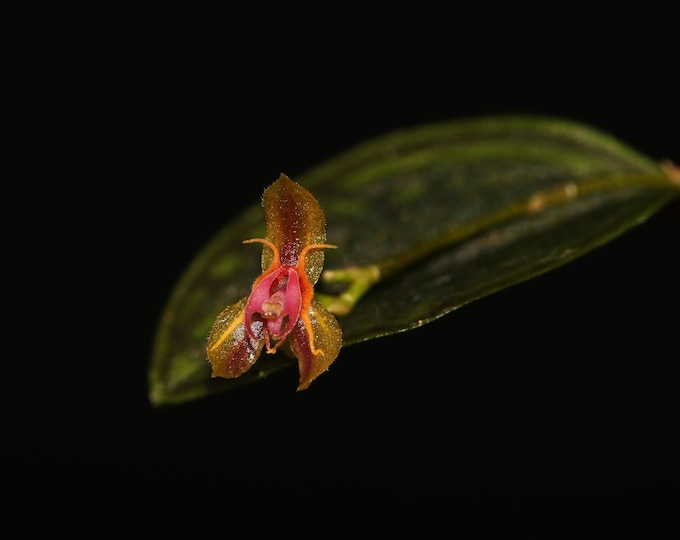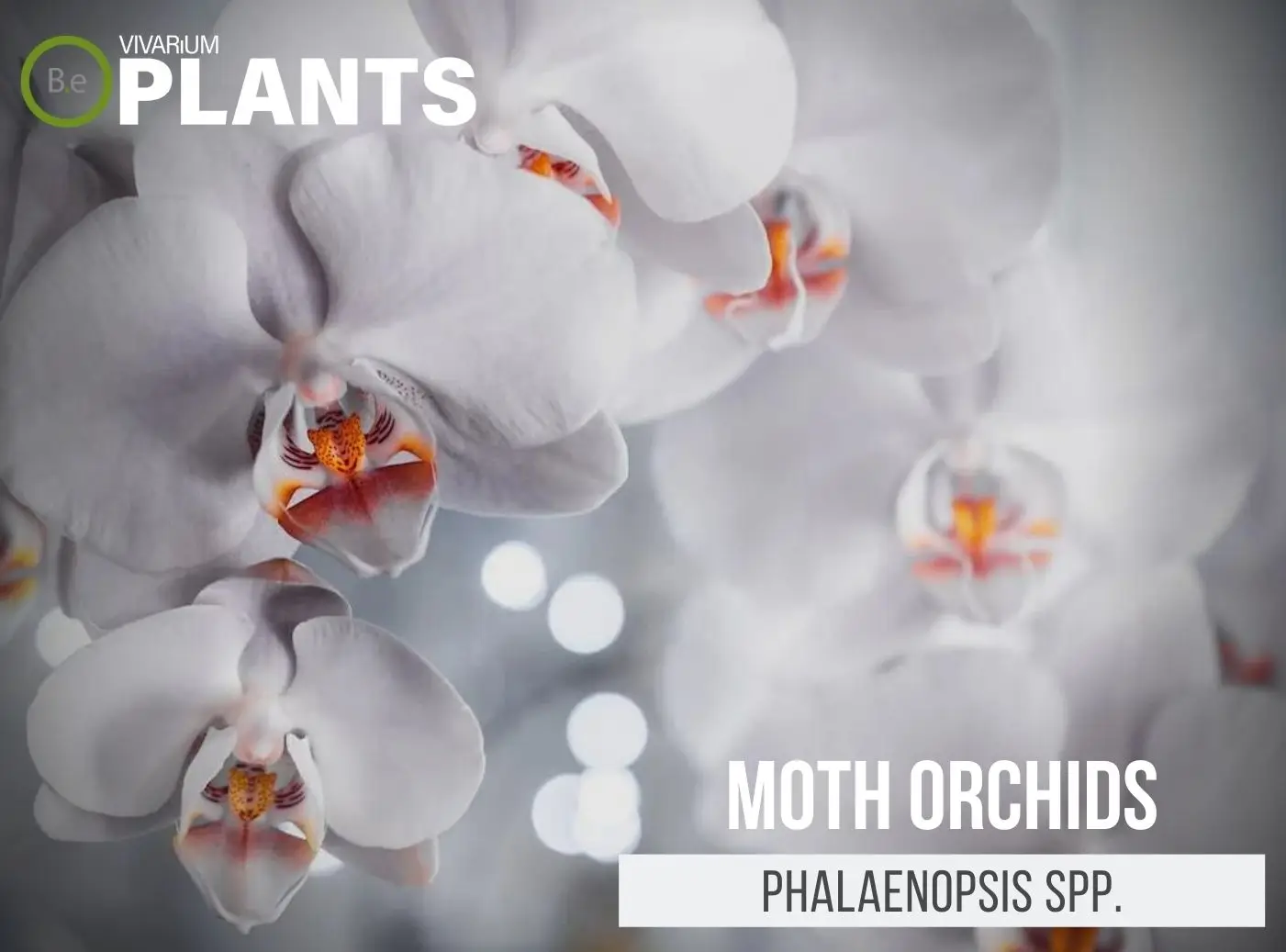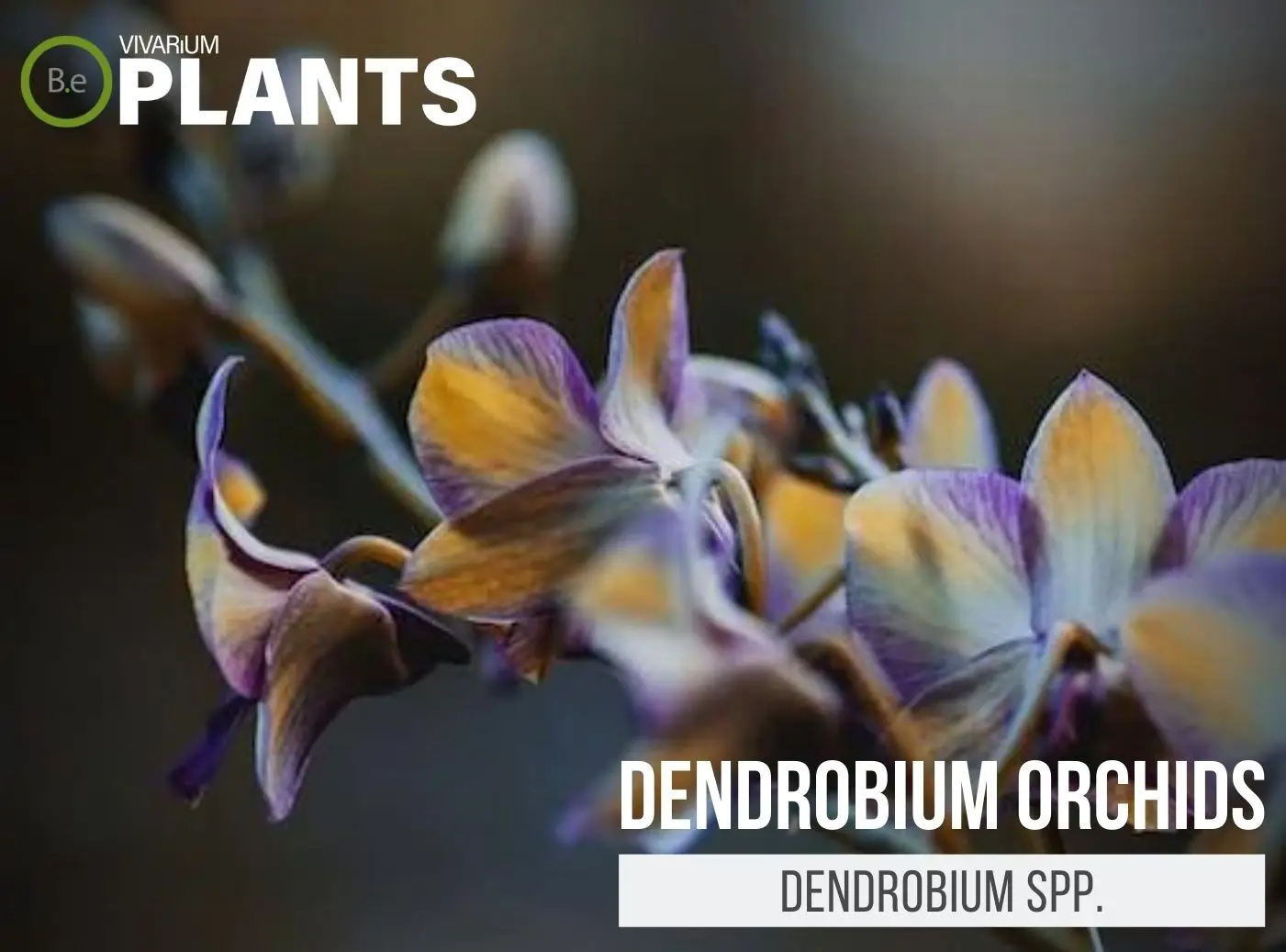The Lepanthes genus of orchids is one of the most beautiful and easily cultivated orchids, making it a perfect terrarium orchid.
Lepanthes orchids possess diminutive sizes with delicate, intricate flowers, and their adaptability to many environments makes them ideal for terrariums.
This article will explore the key aspects to bear in mind when considering introducing Lepanthes to a vivarium, as well as tips for successful cultivation.
Read on to learn more about this remarkable genus and how to make them thrive in your setup.
Table Of Contents:
ToggleWhat Are Lepanthes Orchid?
Lepanthes spp. is an orchid genus of small flowering plants from Central and South America.
These plants are also commonly known as ‘frog orchids’ due to the frog-like shape of the labellum (lower petal).
Which, in some species, appears to have an eye, a snout, and beak-like appendages, resembling a frog’s face.


Lepanthes Orchid Facts
The Lepanthes genus is made up of over 1700 species and hybrids, making it one of the largest genus of orchids in the world.
These beautiful flowers have a wide range of shapes, sizes, and colors to attract pollinators and ensure their survival.
In the wild, they grow on bark, stones, and on the ground in shady forests.
Description
Lepanthes orchids are miniature orchids. Most species will grow to be between 1 and 6 cm tall and have thin, wiry stems and small, fleshy roots.
The flowers of Lepanthes orchids have 3 sepals and 3 petals, with the bottom petal (labellum) being often larger and more elaborate than the other two.
The labellum can come in a variety of shapes, sizes, and colors, ranging from pale yellow to bright purple.
Habitat
The miniature orchids are found in the forests of Mexico, Central, and South America at elevations between 0 and 1200 m.
Most of the species in this genus enjoy a humid, tropical to subtropical climate with warm temperatures (around 55°F to 75°F).
pH Preference
Lepanthes orchids prefer a slightly acidic environment with a pH of around 5.5 to 7.5 but can tolerate moderate alkalinity (pH 8.0).
Vivarium Type
Lepanthes orchids are ideally suited for terrariums and paludariums, due to their miniature size and preference for humid, warm, and bright conditions.
They do best in tall, closed terrariums with good air circulation, since the plants thrive in a humid climate, thereby avoiding rapid evaporation.
Vivarium Placement
Lepanthes spp. are very versatile in terms of where they can be placed in a vivarium.
These plants will grow well in either the background, foreground, or midground area.
Jas long as the environment provides some shade and proper lighting.
Substrate
Lepanthes orchids prefer a light, airy mixture of composted bark, charcoal, and perlite.
However, they can also be grown in a variety of other substrates, such as coconut coir and sphagnum moss.
Lighting
Lepanthes spp. is a low-light orchid and will grow best in moderate indirect sunlight or cool terrarium lighting.
Bright, direct sunlight can be harmful to the leaves of these plants, so it’s important to make sure they are not in direct view of the sun.
Buy Lepanthes Orchid
When shopping for orchids, expect a few key indicators you are buying the best quality plant. The plant should be pest free.
The source of the orchid will more than likely not be in bloom so don’t worry if it arrives without flowers.
Click the image below to find out more about the current price and other relative info:
Lepanthes Orchid Care and Propagation
Lepanthes orchids require only minimal care, making them a great option for beginner vivarium keepers.
They will benefit greatly from occasional misting and waterings, as well as regular fertilizer applications.
To propagate these plants, simply divide the plant into smaller pieces and replant them in the substrate.
How to grow
Miniature orchids are fast-growing plants, so it’s important to fertilize them regularly and make sure they are not kept too wet.
Make sure to water these plants when the soil feels dry and mist them often to provide extra humidity.
Watering
Lepanthes spp. prefer to be watered on a regular basis, with the soil moist but not soggy.
Overwatering can cause root rot, so it’s important to make sure the roots are not soaking in water.
Plants Similar To Lepanthes Orchid
Adding diversity to an enclosure is key to an aesthetically pleasing enclosure.
Try mixing up the look of your terrarium with different flora that can easily co-exist in the same types of environment.
Furthermore, if for some reason you find this orchid hard to acquire or would like to consider something similar to this terrarium plant…
Here are some other plants you might find may do well with or in the place of cattleya spp.:
Conclusion
Lepanthes spp. is a great beginner plant for vivariums.
With a little love and attention, they will reward you with a beautiful display of vibrant flowers that will bring new life to your terrarium.
These tiny orchids will thrive in a variety of environments, making them perfect for any vivarium set-up.
Frequently Asked Questions
Yes, miniature orchids typically stay small, with most varieties growing to be between 2–6 centimeters tall.
1. Water Mini Orchids Every 7–10 Days
2. Use Bright, But Not Direct, Sunlight
3. Feed Mini Orchids Monthly
4. Repot Mini Orchids Every 2–3 Years
5. Prune Mini Orchids As Needed
6. Provide Mini Orchids With High Humidity
7. Check for Insects on Mini Orchids Regularly
Mini orchids typically live for about 2–3 years.
To care for a mini orchid after it blooms, water it every 7 to 10 days with lukewarm water and feed it a balanced fertilizer once a month. Trim any dead or dying leaves and cut the flower spike down to the base once the blooms fade. Move the orchid to a bright, indirect spot and keep it away from any hot or cold drafts.
Yes, a mini orchid can bloom again with proper care. To help ensure blooms in the future, keep the orchid in an area with medium to bright, indirect light and ensure that the soil is not too wet and not too dry. Additionally, fertilize regularly and remove any dead flowers or leaves as soon as possible.
If it is about to enter a dormancy period, it typically takes a mini orchid 6–9 months to rebloom after its last bloom.






